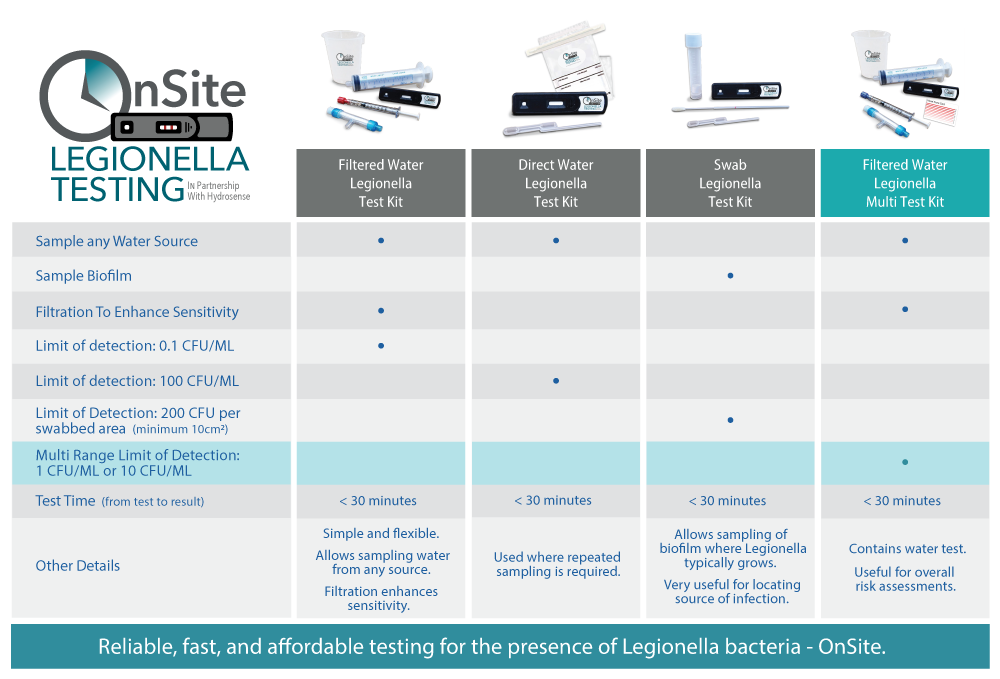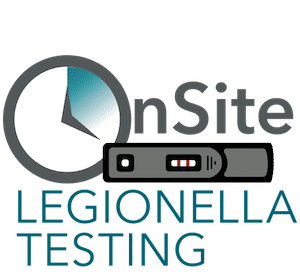FAQs
It depends on the system that you have and the outcome of your risk assessment. For open systems, such as cooling towers, evaporative condensers and spa pools etc, routine testing should be carried out at least quarterly. However, there may be circumstances were more frequent sampling may be required.
The purpose of testing water samples is to mitigate the risk of Legionnaires’ disease which is a result of the Legionella bacteria growing in the water system and can be fatal so should be taken seriously.
- Plate Count
- On Site Legionella Testing – Antigen
- PCR
Legionella, the bacterium that causes Legionnaires’ disease, occurs naturally in freshwater environments, like lakes and streams. Generally the low amounts of these bacteria in freshwater do not lead to disease. However, Legionella can pose a health risk when it gets into building water systems.
Legionella are most commonly found in water, including groundwater, fresh and marine surface waters, and potable (treated) water. Legionella are protected against standard water disinfection techniques, by their symbiotic relations with later microorganisms.
Legionella bacteria can build up in any shower, tap, or water outlet that is not used regularly as the water in the system remains stagnant. When turned on, bacteria will flow out of the system with water, and whoever is using the shower will breathe in aerosols containing Legionella bacteria.
Chemical shock using an elevated level of a disinfectant, such as chlorine, for a limited duration can control Legionella in a potable water system.
Hot water can kill Legionella bacteria. To kill Legionella bacteria, you need to make sure that the water is too hot for them to live. You don’t need to boil them, but you do need to get them above 60°C.
More illness is usually found in the summer and early fall, but it can happen any time of year.
$150 – $300 USD per test.
Most people become infected when they inhale microscopic water droplets containing legionella bacteria. This might be from the spray from a shower, faucet or whirlpool, or water from the ventilation system in a large building.
Yes you can. The legislation states that it must be carried out by a person deemed competent to do so.
The risk increases with age but some people are at higher risk including:
- people over 45 years of age.
- smokers and heavy drinkers.
- people suffering from chronic respiratory or kidney disease.
- diabetes, lung and heart disease.
- anyone with an impaired immune system.
Where is Legionella found? Legionella are widespread in the environment in water and may grow in hot and cold water systems. They survive low temperatures and thrive at temperatures between 20°C and 45°C if a supply of nutrients is present.
Stagnant water favors Legionella growth. To reduce the risk you should remove dead legs/dead ends in pipe-work, flush out infrequently used outlets (including showerheads and taps) at least weekly and clean and de-scale shower heads and hoses at least quarterly.
Legionnaires’ disease symptoms are similar to other types of pneumonia and it often looks the same on a chest x-ray. Legionnaires’ disease can also be associated with other symptoms such as diarrhea, nausea, and confusion. Symptoms usually begin 2 to 14 days after being exposed to the bacteria, but it can take longer.
Legionnaires’ disease requires treatment with antibiotics and most cases of this illness can be treated successfully. Healthy people usually get better after being sick with Legionnaires’ disease, but they often need care in the hospital.
Most people with Legionnaires’ disease need care in a hospital, but will fully recover with treatment. However, about one in 10 who get this disease will die due to complications from their illness.
Some studies have shown that Legionella in aerosols can survive for several hours and that viability depends on humidity and bacterial strain.
Whenever a property is to be left unused for a time, weekly flushing is a good way to reduce the chances of any problems cropping up. It is easy to do and requires only a small amount of time. Each tap and water outlet (including showers) should be opened and left to run through for at least five minutes.


OnSite Legionella Testing assures your facility has a good fact pattern documenting consistent use of best practices resulting in control of legionella.
Contact us
Email: [email protected]
Phone: 925-320-3555
Address: 4464 Lone Tree Way #316, Antioch CA 94531